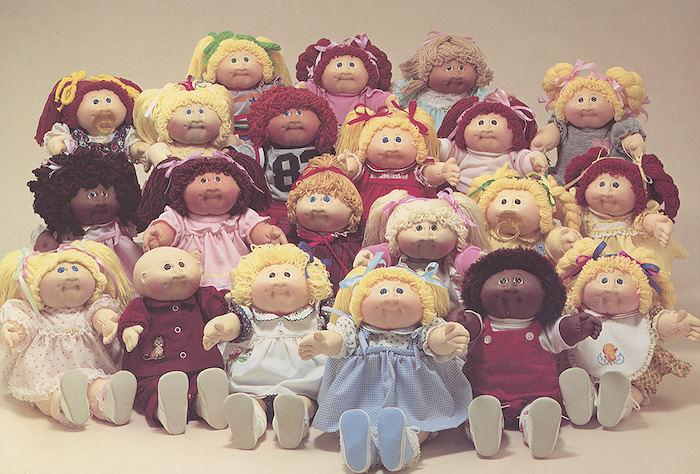Business History, Toys and Childhood
Cabbage Patch Doll Riots of 1983: The Battle for the Beloved Plush Toy
The Cabbage Patch Craze: A Phenomenon Begins
The inception of Cabbage Patch Dolls traces back to the early 1970s when Xavier Roberts, a young artist, began crafting unique plush dolls. Roberts envisioned dolls that would carry distinct personalities and charm, correlating their appearance to the whimsical qualities of children’s imagination. In 1978, he created the “Little People” dolls, which laid the foundation for the Cabbage Patch phenomenon that would later engulf the nation. By 1982, Roberts, now an accomplished entrepreneur, signed a licensing deal that would see his creations transformed into the Cabbage Patch Dolls we recognize today.
What set Cabbage Patch Dolls apart were their unique characteristics. Each doll boasted a distinctive face crafted with a unique combination of fabric, hair, and clothing, providing an illusion of individuality. This aspect resonated strongly with children, who developed instant emotional attachments. Additionally, the dolls were marketed as “adoptable,” generating a sense of belonging and nurturing that appealed to both children and their parents. The image of adopting a Cabbage Patch Doll became a key selling point, leading it to be perceived less as a toy and more as a cherished friend.
Marketing strategies played a crucial role in amplifying the Cabbage Patch craze. The dolls were launched with a strategic blend of television advertisements and promotional events, effectively igniting public interest. Retailers experienced a surge in demand, and the ensuing scarcity led to an unprecedented level of frenzy. Stores quickly found themselves running low on stock, leading parents to camp outside in order to purchase the coveted toys during the holiday season. This shortage not only intensified consumer desire, but it also solidified the dolls’ status as the must-have gift of 1983. As a result, the Cabbage Patch Dolls garnered cultural significance, symbolizing a moment when the world of children’s toys transcended mere playthings to become meaningful emotional companions.

The Build-Up to Chaos: Retailer Preparations
As the holiday season of 1983 approached, retailers across the United States recognized the potential for unprecedented demand for Cabbage Patch Dolls. With their unique appearance and captivating backstory, these plush toys quickly became a sensation among children and parents alike. In response to the swelling interest, store management implemented a series of strategic preparations to capture the market and cater to a frenzied consumer base.
Many retailers began by establishing waiting lists, allowing consumers to reserve their dolls in advance. This strategy not only helped gauge demand but also created an aura of exclusivity around the toy. By limiting stock levels, stores were able to make Cabbage Patch Dolls seem more desirable, an approach that inadvertently intensified competition among parents eager to secure one for their child. The scarcity transformed the shopping experience into a race against time, as families scrambled to be among the fortunate few to claim these coveted toys before they vanished from store shelves.
Moreover, several retailers organized special release events, which attracted crowds and heightened excitement within communities. These events featured elaborate promotions and marketing campaigns designed to draw shoppers in, amplifying anticipation for the dolls. However, as the release dates approached, media coverage intensified, further stoking the flames of rivalry among parents interested in securing a Cabbage Patch Doll. Advertisements showcased the doll’s charm and individuality, leading to inflated expectations that would soon contribute to chaos in retail environments when the dolls officially became available.
The combination of limited stock, waiting lists, special releases, and relentless media attention set the stage for the turmoil that would unfold in stores, as parents battled against each other in pursuit of their children’s holiday wishes. This atmosphere ultimately fostered a sense of urgency and desperation, laying the groundwork for the notorious events that followed during the 1983 holiday shopping season.

The Riots: Storefronts Turned Battlegrounds
In November 1983, as the holiday season approached, the Cabbage Patch Doll phenomenon reached a fever pitch, leading to chaotic scenes across retail stores. Parents, driven by the desire to secure these coveted plush toys for their children, clashed in malls and department stores from coast to coast. The atmosphere was charged with both excitement and desperation, as families braced themselves for the battle ahead.
Reports from various locations highlighted the extreme lengths to which parents were willing to go. For instance, in a suburban department store, parents formed a human barricade at the entrance, determined to seize the dolls the moment they hit the shelves. As the doors swung open, a wave of frantic shoppers surged forward, resulting in shouts, pushing, and even physical altercations. In one notable incident in New York, a fight broke out over a single plush doll, showcasing how quickly the atmosphere transformed from a festive shopping experience to a scene of chaos.
Some stores attempted to regain control by implementing ticket systems or limiting the number of dolls each customer could purchase, but these measures often backfired. Media coverage of the riots added fuel to the fire, as the public became enthralled by the spectacle of adults behaving in ways that starkly contrasted with their typical roles as responsible parents. Eyewitness accounts described the pandemonium as parents trampled each other in their quest, with some even lamenting that the scene resembled a battlefield rather than a place to purchase toys.
The intensity of the Cabbage Patch Doll riots not only highlighted the obsession with consumerism during the holiday season but also raised questions about societal values and the lengths to which individuals would go to provide happiness for their children. As the chaos unfolded, it became evident that the pursuit of a toy was transforming into a crisis of civility, with lasting implications for the future of holiday shopping traditions.

Aftermath and Legacy: Reflection on Consumer Culture
The Cabbage Patch Doll riots of 1983 stand as a defining moment in the intersection of consumer culture and childhood, showcasing the lengths to which parents would go to secure a seemingly innocent toy for their children. In the aftermath, the frenzy surrounding these plush dolls illuminated the realities of a burgeoning consumerism that would shape the holiday shopping experience. The events during the peak of demand highlighted a significant shift in parenting dynamics and the commercialization of childhood, prompting key discussions about consumer behavior.
Reflecting on these riots, one can observe a transformation in how toys are marketed and perceived. The Cabbage Patch Dolls, initially conceived as unique collectibles, quickly became symbols of coveted status among children and their parents. The ensuing chaos during the holiday season prompted retailers and manufacturers to reconsider inventory management and marketing strategies. Moreover, this event ushered in a new awareness of how consumer pressure influences holiday shopping, demonstrating that demand could swiftly outweigh supply, leading to unprecedented consumer behavior.
The legacy of the Cabbage Patch Doll riots extended beyond the immediate events, serving as a poignant reminder of the impacts of materialism on family dynamics. Parents learned valuable lessons in the importance of navigating desires and expectations surrounding consumer goods. This ongoing dialogue surrounding parenting in the face of commercial pressures remains relevant today, emphasizing the need for balance in how children approach material possessions.
Furthermore, Cabbage Patch Dolls have become emblematic of the 1980s, influencing not only the toy industry but also shaping future trends in marketing toys. This cultural phenomenon serves as an enduring reminder of the complex relationship between affection, consumerism, and childhood, as well as the lasting impressions that such toys can have on familial relationships and societal norms.

